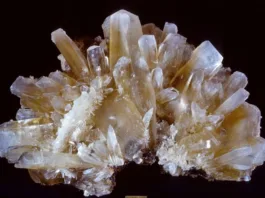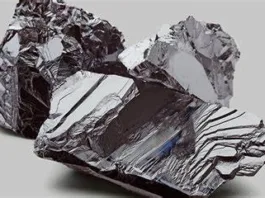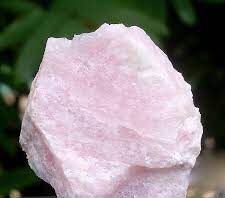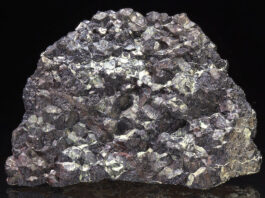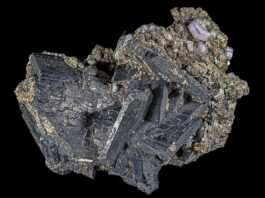Copper (Cu) ore is a naturally occurring mineral deposit that contains copper in varying concentrations. It is an important industrial metal that has been used by human civilizations for thousands of years due to its excellent electrical and thermal conductivity, high ductility, and resistance to corrosion. Copper is widely used in various applications, including electrical wiring, plumbing, construction, transportation, and electronics, making it a critical component of modern society.
Copper ore is typically found in the Earth’s crust in the form of copper minerals, such as chalcopyrite, bornite, malachite, and chalcocite, among others. The formation of copper ore deposits involves complex geological processes, including hydrothermal activity, magmatic intrusions, and weathering of rocks. Copper ore deposits are found in various types of geologic environments, including porphyry deposits, skarn deposits, sedimentary deposits, and volcanogenic massive sulfide deposits, among others.

Mining and extraction of copper ore involve various methods, such as open-pit mining, underground mining, and in-situ leaching, depending on the type and location of the deposit. After extraction, copper ore is processed and beneficiated to obtain copper concentrates, which are then further refined to produce high-quality copper products.
The global distribution of copper ore deposits is widespread, with major producing countries including Chile, Peru, China, the United States, and Australia, among others. Copper mining and processing have significant economic importance, contributing to global trade, employment, and economic development. However, copper mining also has environmental and social impacts, including land degradation, water and air pollution, biodiversity loss, and social and cultural impacts on local communities.
Contents
Copper (Cu) Ore Minerals
Copper (Cu) ore minerals are naturally occurring compounds that contain copper in various chemical compositions. Copper ore minerals are typically found in rocks and mineral deposits and serve as the primary source of copper for industrial use. Some common copper ore minerals include:
- Chalcopyrite: Chalcopyrite (CuFeS2) is the most common and widespread copper ore mineral. It typically appears as brassy yellow or golden-colored crystals or grains and is often found in porphyry copper deposits. Chalcopyrite is an important source of copper and accounts for a significant portion of global copper production.
- Bornite: Bornite (Cu5FeS4), also known as peacock ore, is another important copper ore mineral. It has a characteristic iridescent purple to brown coloration and is often found in hydrothermal and sedimentary copper deposits. Bornite is less common than chalcopyrite but is still a significant source of copper.
- Malachite: Malachite (Cu2CO3(OH)2) is a green-colored mineral that forms as a secondary copper mineral through the weathering and oxidation of primary copper sulfide minerals. It is often found in oxidized copper ore deposits and is known for its distinctive green color and attractive appearance. Malachite has been used as a copper ore mineral in jewelry and ornamental objects.
- Chalcocite: Chalcocite (Cu2S) is a dark-colored copper ore mineral that is often found in the oxidized zones of copper deposits. It is a secondary copper mineral that forms through the weathering and alteration of primary copper sulfide minerals. Chalcocite is an important source of copper in some deposits, particularly those with high-grade ores.
- Covellite: Covellite (CuS) is a copper sulfide mineral that is usually found in the oxidized zones of copper deposits. It has a characteristic indigo-blue color and is often associated with other secondary copper minerals.
- Tetrahedrite: Tetrahedrite ((Cu,Fe)12Sb4S13) is a complex copper ore mineral that contains antimony as well. It is commonly found in hydrothermal veins and is often associated with other sulfide minerals. Tetrahedrite is known for its dark color and metallic luster, and it can be an important source of copper in some ore deposits.
- Cuprite: Cuprite (Cu2O) is a rare oxide mineral that forms as a secondary copper mineral in oxidized copper deposits. It has a deep red color and often occurs as crystals or fine-grained masses. Cuprite is not a major source of copper due to its relatively low copper content, but it is sometimes used as a decorative stone.
- Azurite: Azurite (Cu3(CO3)2(OH)2) is a blue-colored carbonate mineral that is often found in oxidized copper ore deposits. It forms as a secondary mineral through the weathering and alteration of primary copper minerals. Azurite is known for its striking blue color and is used as a gemstone and in jewelry.
- Digenite: Digenite (Cu9S5) is a copper sulfide mineral that is often found in hydrothermal veins and can occur as a primary or secondary copper ore mineral. It has a dark color and metallic luster and is less common than other copper ore minerals, but it can be an important source of copper in some deposits.
- Enargite: Enargite (Cu3AsS4) is a copper-arsenic sulfide mineral that is found in some copper ore deposits. It has a dark gray to black color and is often associated with other copper and sulfide minerals. Enargite is less common than other copper ore minerals but can be an important source of copper, as well as arsenic.
These are some of the common copper ore minerals that are found in nature. Understanding the different types of copper ore minerals and their properties is important in the exploration, mining, and processing of copper ores for industrial use.
Geology and Formation of Copper (Cu) Ore
The geology and formation of copper (Cu) ore are complex processes that involve various geological and geochemical factors. Copper ores are typically formed through several stages of mineralization, which occur over millions of years. Here’s an overview of the geology and formation of copper ore:
- Igneous Processes: Copper can be found in igneous rocks such as granites, porphyries, and volcanic rocks. When magma, molten rock beneath the Earth’s surface, intrudes into the crust, it can carry copper-rich fluids that crystallize and form copper ore minerals. This process, known as magmatic-hydrothermal mineralization, occurs in areas with active tectonic processes, such as subduction zones or rift zones.
- Hydrothermal Processes: Hydrothermal processes play a significant role in the formation of copper ore deposits. Hot fluids, rich in copper and other minerals, can migrate through cracks and fractures in the Earth’s crust and deposit copper minerals as they cool and react with the host rocks. These hydrothermal fluids can originate from various sources, such as magmas, groundwater, or even seawater. Hydrothermal copper ore deposits are commonly found in association with volcanic or sedimentary rocks.
- Sedimentary Processes: Copper ore can also form through sedimentary processes. In certain environments, such as sedimentary basins or evaporite deposits, copper can accumulate in sediments through chemical precipitation or organic processes. Over time, these copper-rich sediments can become buried, compacted, and lithified to form sedimentary copper ore deposits.
- Oxidation and Weathering Processes: Copper ore deposits can also form through oxidation and weathering processes. Primary copper sulfide minerals, such as chalcopyrite or bornite, can weather and oxidize near the Earth’s surface, forming secondary copper minerals such as malachite, azurite, and cuprite. These secondary copper minerals are often found in oxidized zones above primary copper deposits.
- Secondary Enrichment: Secondary enrichment is a process that can occur in certain geological environments, where copper minerals are transported and concentrated by weathering and erosion processes. In areas with high rainfall and abundant vegetation, copper can be leached from the original ore deposits and carried by groundwater to lower regions where it can re-precipitate and accumulate, forming enriched copper ore deposits.
The geology and formation of copper ore are influenced by a combination of geological, geochemical, and hydrothermal processes that occur over millions of years. Understanding these processes is critical in the exploration and mining of copper ore deposits to identify potential resources and optimize extraction methods.

Copper (Cu) Ore Deposits
Copper ore deposits are natural accumulations of copper-containing minerals that can be economically extracted and processed to obtain copper metal. There are several types of copper ore deposits, each with its unique geological characteristics. Some of the common types of copper ore deposits are:
- Porphyry Copper Deposits: These are the most common type of copper ore deposits and account for the majority of global copper production. Porphyry copper deposits are large, low-grade deposits typically associated with intrusive igneous rocks. They form when copper-rich fluids are released from a cooling magma body and deposit copper minerals in the surrounding rocks.
- Sediment-Hosted Copper Deposits: These deposits are formed through the accumulation of copper minerals in sedimentary rocks, usually in the form of copper-rich shales, sandstones, or carbonates. They are typically associated with basins or rifts where sedimentary rocks have been subjected to tectonic processes, leading to the formation of copper mineralization.
- Volcanogenic Massive Sulfide (VMS) Deposits: These are copper ore deposits associated with submarine volcanic activity. VMS deposits form when hot, metal-rich fluids are released from volcanic vents on the seafloor and mix with seawater, leading to the precipitation of copper minerals along with other metal sulfides.
- Skarn Deposits: Skarn deposits are formed at the contact between intrusive igneous rocks and carbonate-rich sedimentary or metamorphic rocks. They occur when copper-rich fluids interact with carbonate rocks, leading to the replacement of carbonate minerals by copper minerals.
- Replacement Deposits: These deposits form when copper minerals replace existing minerals in rocks, such as limestone, dolomite, or other rocks. Replacement deposits are often associated with hydrothermal fluids that interact with the host rocks, leading to the deposition of copper minerals.
- Oxide Copper Deposits: Oxide copper deposits are formed when copper minerals are oxidized near the Earth’s surface, typically through weathering processes. They are usually found in arid or semi-arid regions and are characterized by the presence of copper oxides, such as malachite and azurite.
- Copper-Nickel Sulfide Deposits: These deposits are rich in both copper and nickel, and are typically associated with ultramafic rocks, such as peridotite. Copper-nickel sulfide deposits are primarily mined for their nickel content, but also contain significant amounts of copper.
These are some of the main types of copper ore deposits found around the world. The geology, mineralogy, and characteristics of copper ore deposits can vary greatly, influencing the methods of exploration, mining, and extraction used to obtain copper from these deposits. Understanding the different types of copper ore deposits is crucial in identifying and evaluating potential copper resources for mining and production.
Mining and Extraction of Copper (Cu) Ore
Mining and extraction of copper (Cu) ore involve several steps, including exploration, mining, and processing. Here’s an overview of the typical process:
- Exploration: The first step in mining copper ore is exploration, which involves identifying potential copper deposits through various methods such as geological mapping, geochemical sampling, geophysical surveys, and drilling. This helps to determine the size, grade, and location of the copper deposits.
- Mine Planning and Development: Once a copper deposit is identified, mine planning and development begin. This involves determining the optimal mining method, mine design, and infrastructure requirements based on the characteristics of the deposit, such as its size, shape, depth, and grade. Environmental and social considerations are also taken into account during this stage.
- Mining: Mining of copper ore can be done through various methods, depending on the deposit’s characteristics and location. Common mining methods include open-pit mining, underground mining, and in-situ leaching. Open-pit mining involves removing overburden (the soil, rock, and vegetation overlying the ore body) to expose and extract the copper ore. Underground mining involves digging tunnels or shafts to access the ore body, and in-situ leaching involves injecting a leaching solution into the ore body to dissolve the copper and then recovering the copper-rich solution.
- Ore Processing: Once the copper ore is extracted, it is transported to a processing plant for further treatment. The ore is typically crushed, ground, and then subjected to physical and chemical processes to separate the copper minerals from the gangue (waste rock) and other impurities. Common processing methods include froth flotation, smelting, and electro-refining. Froth flotation is a commonly used method that involves adding chemicals to the ore slurry to selectively separate copper minerals from other minerals. Smelting involves melting the concentrate to remove impurities and produce copper matte, which is then further refined through electro-refining to produce high-grade copper cathodes.
- Environmental and Social Considerations: Mining and extraction of copper ore also involve environmental and social considerations. Proper waste management, water and air pollution control, and land reclamation are important aspects of responsible mining practices. Additionally, engagement with local communities, indigenous peoples, and other stakeholders is crucial to ensure that the social and economic impacts of mining are properly managed and mitigated.
- Product Transportation and Sale: Once copper is extracted and processed, it is typically transported to customers or sold on the global market. Copper is used in a wide range of applications, including in electrical wiring, plumbing, construction, and transportation, among others.
Mining and extraction of copper ore require careful planning, technical expertise, and adherence to environmental and social regulations to ensure sustainable and responsible mining practices.

Processing and Beneficiation of Copper (Cu) Ore
Processing and beneficiation of copper (Cu) ore involves several stages to extract and refine copper from the raw ore. Here’s an overview of the typical process:
- Crushing and Grinding: Copper ore is typically mined as large rocks or ores, which need to be crushed and ground into smaller particles for further processing. Crushing and grinding are carried out to break down the ore into smaller pieces, which increases the surface area and exposes the copper minerals for subsequent processing.
- Froth Flotation: Froth flotation is a common method used to separate copper minerals from the gangue (waste rock) and other minerals in the ore. In this process, the crushed and ground ore is mixed with water and chemicals, including collectors, frothers, and modifiers, which selectively attach to the copper minerals and make them hydrophobic (repel water). Air is then blown through the mixture to create bubbles, which carry the hydrophobic copper minerals to the surface, where they form a froth that can be collected and further processed to produce copper concentrate.
- Concentrate Thickening and Filtration: The froth flotation process produces a copper concentrate, which is a high-grade product containing copper minerals. The concentrate is then thickened and filtered to remove excess water and impurities, such as gangue minerals and chemicals used in the flotation process.
- Smelting: Copper concentrate is usually further processed through smelting, which involves melting the concentrate at high temperatures to remove impurities and produce copper matte, a mixture of copper and iron sulfide minerals. Smelting is typically carried out in a furnace or a converter, and the resulting copper matte is then further refined through other processes.
- Electro-Refining: Copper matte produced from smelting is further refined through electro-refining, which involves dissolving the copper matte in an electrolyte solution and passing an electric current through it. This causes the copper ions to migrate from the anode to the cathode, where they are deposited as high-purity copper metal. Electro-refining is used to produce high-grade copper cathodes, which are the final product of the copper refining process.
- Tailings Management: The processing of copper ore also generates waste materials, known as tailings, which are typically stored in tailings ponds or tailings impoundments. Proper management of tailings is crucial to prevent environmental contamination and ensure responsible mining practices. Tailings can be managed through various methods, such as thickening, filtration, and dry stacking, to reduce the environmental impact and promote sustainable waste management practices.
- Water and Environmental Management: Water is an important resource used in the processing of copper ore, and proper water management is essential to ensure sustainable mining practices. Water is used for various purposes in copper processing, including ore grinding, flotation, and dust suppression. Proper water management involves minimizing water consumption, treating and recycling process water, and complying with environmental regulations to prevent water pollution.
- Environmental and Social Considerations: Similar to mining and extraction, processing and beneficiation of copper ore also involve environmental and social considerations. Proper waste management, emissions control, and compliance with environmental regulations are important aspects of responsible processing practices. Additionally, engagement with local communities, indigenous peoples, and other stakeholders is crucial to ensure that the social and economic impacts of processing are properly managed and mitigated.
Processing and beneficiation of copper ore require advanced technical expertise, careful management of resources and waste materials, and compliance with environmental and social regulations to ensure sustainable and responsible mining practices.
Global Distribution of Copper (Cu) Ore
Copper ore is found in various locations around the world, with significant deposits occurring in many countries. Here are some of the major global distribution areas of copper ore:
- Chile: Chile is the world’s largest producer of copper, with vast copper deposits located in the Andean region of the country, particularly in the northern regions such as the Atacama Desert. Chile’s copper production is concentrated in large-scale open-pit mines, such as Chuquicamata, Escondida, and Collahuasi.
- Peru: Peru is another major copper producer, with significant copper deposits located in the Andean region, particularly in the southern regions such as the regions of Arequipa, Cusco, and Moquegua. The Cerro Verde mine is one of the largest copper mines in Peru.
- United States: The United States has substantial copper deposits, particularly in the western states such as Arizona, Utah, New Mexico, and Montana. The Bingham Canyon Mine in Utah is one of the largest open-pit copper mines in the world.
- Australia: Australia is a significant copper producer, with copper deposits found in various regions such as Queensland, New South Wales, and South Australia. The Olympic Dam mine in South Australia is one of the largest copper mines in the world, known for its production of copper, uranium, and gold.
- Indonesia: Indonesia has notable copper deposits, particularly in the Grasberg mine located in Papua province, which is one of the largest copper mines in the world. The mine also produces significant amounts of gold and other minerals.
- Zambia: Zambia is a major copper producer in Africa, with the Copperbelt region known for its copper deposits. The mines in Zambia are typically underground operations, with the Konkola Copper Mines being one of the largest copper producers in the country.
- Democratic Republic of Congo (DRC): The DRC has significant copper deposits, particularly in the Katanga province, known for its copper-cobalt resources. The Tenke Fungurume mine in the DRC is one of the largest copper-cobalt mines in the world.
- Other countries: Copper ore deposits are also found in other countries such as Canada, Russia, Kazakhstan, Mexico, China, and Brazil, among others, though the production levels may vary.
It’s important to note that the distribution of copper ore deposits is subject to change over time due to new discoveries, mining activities, and evolving economic and geopolitical factors.

Uses and Applications of Copper (Cu) Ore
Copper ore, once extracted and processed, has a wide range of uses and applications in various industries. Some of the major uses and applications of copper ore include:
- Electrical and Electronics: Copper is an excellent conductor of electricity, making it a crucial material in electrical and electronic applications. It is used in electrical wiring, power transmission and distribution systems, motors, generators, transformers, printed circuit boards, and other electronic components.
- Construction and Architecture: Copper is used in various construction and architectural applications due to its durability, corrosion resistance, and aesthetic appeal. It is used in roofing, gutters, downspouts, plumbing systems, heating and cooling systems, and decorative elements.
- Transportation: Copper is used in various transportation applications, including in the manufacturing of automobiles, aircraft, trains, and ships. It is used in wiring, connectors, radiators, brakes, bearings, and other components.
- Industrial Machinery and Equipment: Copper is used in the manufacturing of various industrial machinery and equipment, such as pumps, valves, heat exchangers, and hydraulic systems, due to its excellent thermal and electrical conductivity, corrosion resistance, and machinability.
- Renewable Energy: Copper is used in renewable energy applications, such as in solar panels, wind turbines, and energy storage systems, due to its high thermal and electrical conductivity and durability.
- Consumer Goods: Copper is used in the manufacturing of consumer goods such as kitchenware, cookware, home appliances, and decorative items due to its antimicrobial properties, durability, and aesthetic appeal.
- Agriculture: Copper-based pesticides and fungicides are used in agriculture to protect crops from pests and diseases.
- Health and Medicine: Copper is an essential trace element required for the proper functioning of the human body. It is used in dietary supplements and medical equipment, such as in surgical instruments, due to its antimicrobial properties and biocompatibility.
- Coins and Currency: Copper is used in the manufacturing of coins and currency in some countries due to its durability, malleability, and unique appearance.
- Art and Decoration: Copper is used in art and decoration, including sculptures, jewelry, and decorative items, due to its malleability, corrosion resistance, and distinctive color.
These are just some of the many uses and applications of copper ore, showcasing its versatility and importance in various industries and sectors of the global economy.

Summary of the key points
Here is a summary of the key points regarding copper (Cu) ore:
- Copper ore is a mineral deposit that contains copper in concentrations high enough to be economically extracted and processed.
- Copper ore minerals include chalcopyrite, bornite, chalcocite, and malachite, among others.
- Copper ore is formed through geological processes such as hydrothermal deposition, porphyry copper deposits, and sedimentary copper deposits.
- Copper ore is primarily mined through open-pit or underground mining methods.
- The extraction of copper from copper ore involves crushing, grinding, flotation, smelting, and refining processes.
- Copper ore has numerous uses and applications, including electrical and electronics, construction and architecture, transportation, renewable energy, consumer goods, agriculture, health and medicine, coins and currency, and art and decoration.
It’s important to note that the global distribution, geology, mining, extraction, processing, and uses of copper ore are complex and multifaceted, with various factors influencing the overall picture. The information provided serves as a general outline of the key topics related to copper ore and is not exhaustive. Further research and consultation with reliable sources are recommended for a comprehensive understanding of the subject.

